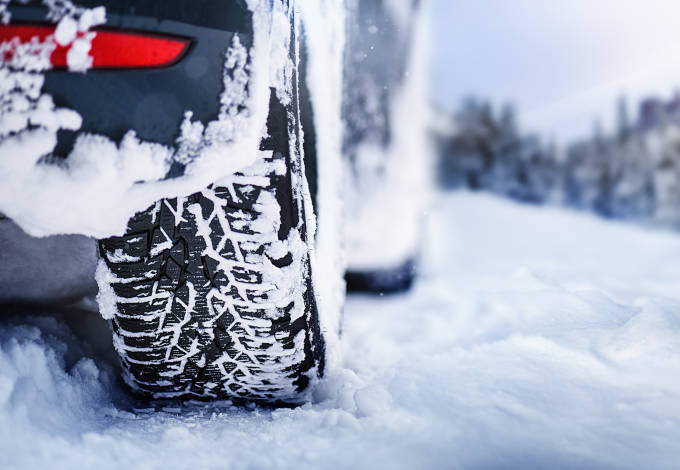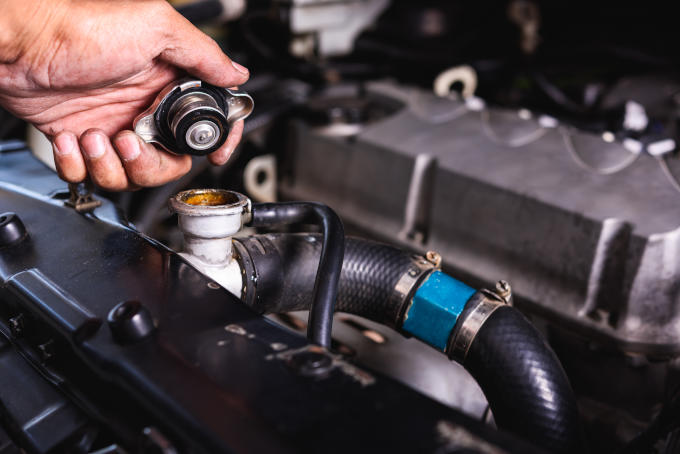Just as we don’t want the A/C system blowing hot air in the summer, we also don’t want our vehicle’s Heater and Defroster System blowing cold air in the winter. If this is happening to you, don’t ignore it. Gaining a bit of understanding of how your vehicle’s heating system works, what might be wrong with it, and possible fixes can help the repair process and keep you warm and dry in your vehicle during the wet, cold months of winter.
How Does a Vehicle’s Heating System Work?
Nearly all engines in the world fall into one of three categories for heating: Liquid-cooled engine heating, air-cooled engine heating, and electrical engine heating. They use different approaches, but the Liquid-cooled version is the most common of the three. This type is the one we will be discussing today.
Where does the heat come from that warms our vehicle’s cabin? Simply put, it’s from heat generated in the engine. After starting your vehicle and getting the engine up to operating temperature, there’s a lot of heat created from this process. So, where does the heat go? The water pump attached to your engine pumps coolant throughout the engine and into the radiator at the front of the vehicle, where it removes some of the heat as air rushes through the fins of the radiator. In addition, the water pump also pumps some of the hot coolant to the heater core, which is designed like a small radiator in the vehicle’s dashboard. Once the coolant is in the heater core, the air from the cabin is forced through the heater core, is heated, and the heater fan blows the hot air into the passenger cabin and defrosters to create warmth for the driver and passengers and to keep your windshield frost-free.
Besides the coolant, radiator, heater core, and blower fans, the engine's thermostat is another critical element for heating and cooling. This small valve, located at the end of the radiator hose, is closed when the engine is cold, allowing the coolant to remain only in the engine, thus warming the engine and coolant faster. As the engine comes to proper operating temperature, the thermostat begins to regulate how much coolant gets to the radiator, ensuring an even, warm coolant temperature. This helps the engine and transmission operate efficiently and supplies hot coolant to create a warm, comfortable cabin interior.
Most Common Reasons a Vehicle’s Heating System May Be Blowing Cold Air
Several core reasons can explain why your heater is not supplying any warm air.
Coolant Level Running Low
To warm the air that passes across the heater core, the heater core relies on a sufficient amount of heated coolant pumped from the engine to the heater core. If the coolant level is low, the heater core will not be sufficiently filled to heat the air properly.
How to Fix It: The first thing to do would be to top up coolant levels and see if that fixes the problem. Don’t attempt to open the radiator cap while the car is running or just after the engine is hot and has been turned off. The hot coolant is under great pressure and will cause severe burns from the surging coolant fluid from the radiator or coolant reservoir when the cap is removed. Letting the car cool removes system pressure, allowing the cap to be removed safely. Typically, if your coolant level is determined to be low, you have a coolant leak that will need to be diagnosed and repaired as soon as possible.
A Stuck Thermostat
As mentioned above, the thermostat should remain closed while the engine and coolant are being heated. As the engine comes to operating temperature, the thermostat will open up to allow coolant and heat to circulate properly. If the thermostat is stuck open due to a malfunction, you can end up with a heater core with cold coolant and no heated air transferring into the passenger compartment.
Alternatively, if the thermostat remains in its closed position, that will cause the engine to severely overheat and cause severe internal damage to the engine and possibly the transmission.
A technician can remove the thermostat and check for defects. And the thermostat can be replaced if it’s no longer working correctly.
An Air Pocket in the Cooling System
Also known as an “airlock,” this type of large air pocket forms because coolant is leaking and air is introduced to the system. It can also occur when the coolant has been changed, or if a cooling system part has been replaced and the system was not purged adequately. A more serious reason may be an engine cylinder head gasket problem or a cracked part in the engine coolant chambers that pushes compressed air into the cooling system. Any air pocket will prevent proper coolant circulation uneven heat from your heater and can potentially cause engine and transmission overheating.
How to Fix It: The air pocket needs to be purged out of the system. First, determine why it has the air pocket and repair that problem. Once completed, your technician will use special equipment to pull a vacuum on the system, pull the new coolant in and eliminate all air. You can try adding fluid to a low system temporarily to get the vehicle to a specialist. To do that, you can set your heater to max to ensure any coolant control valves your vehicle is equipped with are open and then fill the coolant tank back up to its proper level. Leaving the coolant reservoir cap off, start the engine and let it idle for a few minutes while you carefully observe the coolant levels. The level should drop down as the thermostat opens. You can then top the coolant up to the HOT mark of the reservoir or the bottom of the neck if filling from the radiator. If you continue to see bubbles, this may indicate an engine head gasket problem and requires a professional to correct the problem.
Blocked Heater Core
Sometimes your heater core can get blocked up with contaminates, preventing coolant from flowing through it properly. If the heater core has a bypass or heater coolant control valve in the inlet line that has become stuck closed, that will also prevent the heated coolant from getting where it needs to be. However, the most common cause is that the internal tubes are clogged with corrosive contaminants from lack of proper maintenance, preventing the coolant from flowing through the core.
How to Fix It: The simplest solution is to flush the system thoroughly with a chemical flush or a system that backflushes and attempt to remove any blockages. If the heater control valve mentioned above is the problem, it may need replacing. If a technician is repairing this kind of problem, they should also check the heater core flow rate for signs of blockage.
Blower Fan Not (Correctly) Working
Finally, one more reason the heater doesn’t blow hot air is simply that the blower fan is not working correctly or at all, which may be caused by a blown fuse, a faulty motor, faulty control resistor or controller, or by faulty wiring.
How to Fix it: Blown fuses can indicate a problem that may need a professional diagnosis and repair. Additionally, check your cabin air filter. A filter that is clogged with debris, dust, and dirt will not allow the air to flow strongly through the heater core. This filter should be changed often, especially in dusty, dirty environments.
What Happens When You Ignore Heater Problems?
You shouldn’t think that a defective heater not warming you up in your vehicle will only result in you being a lot colder on your next drive. If the reason the heater isn’t working is something like the blower fan fuse, motor, or wiring, then it’s not as mechanically serious, and you’ll just be cold. However, if there’s a blockage in the cooling system, trapped air, or a coolant leak, then you could be staring down the cylinders of an engine ready to overheat.
Even if catastrophic engine failure isn’t imminent, other safety hazards are. A heater not working means your defrosters are not working and you can’t get warm air circulating into the cabin to stop the windows from fogging, which has obvious safety implications for driver visibility. Getting that heater repaired should be your top priority.
Preventative Maintenance Is the Answer
The best medicine for your heater woes is to stop them from happening in the first place. Have your car’s cooling system maintained through regular servicing. Do you know when your radiator, heater core, belts, hoses, and coolant were last checked and signed off by a technician? If not, then it’s time to do it now. Get in touch with AAMCO Lee’s Summit today and keep your vehicle running calmly and comfortably in winter.










